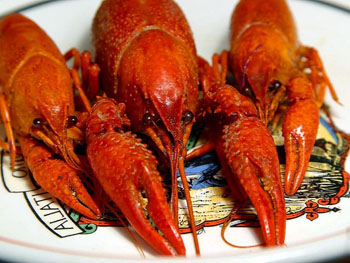Good photographs of food are created as a consequence of careful attention to detail in a number of areas. As with any other still-life photography, there are the usual considerations of preparation, set-up, lighting and so on. However, one particular aspect of food photography is probably unique - the preparation of the food itself.
| By Haeferl (Own work) [CC-BY-SA-3.0 (http://creativecommons.org/licenses/by-sa/3.0)], via Wikimedia Commons |
Unless the photographer is an excellent chef, of he or she has the support of a suitably qualified person, it may prove difficult to achieve the best results across a wide range of food subjects. The preparation of food is in itself an art form acquired through extensive experience. Nevertheless, good images of food are of course achievable given the usual care and attention to detail.
The appearance of food on a plate is as important to a photographer as it is to someone sitting down to a meal. The distribution and balance of food on a plate in terms of shapes, colours, visual weight and the use of negative space, are all important compositional considerations. Also try to guide a viewer's eye in to the shot using lines, space, colour or whatever is appropriate. Well-illustrated cookery books are an obvious source of inspiration.
The basic approach to food photography is comparable to that for any other still-life subject. Background, depth of field, lighting, context and attention to detail remain key considerations. However, speed is also relevant. Food doesn’t maintain a fresh appetizing appearance for very long, although some foods are better in this respect than others. Some delicious dishes change colour, solidify or collapse if left too long so it is important to be aware of this and work quickly where necessary. Plastic demonstration meals, along the lines of those used in the windows of Japanese restaurants, can be used as substitutes to prepare a set-up, determine depth of field and find the best angle of view prior to the arrival of the actual food subject. Vegetable oil can be brushed lightly onto a dish to add an attractive shine.
 |
| Crawfish Dinner by Jon Sullivan |
Excellent images may be obtained using natural window light. If diffused window light proves insufficient or fill is required, a flashgun can be used to bounce light from a white ceiling or reflector. The use of daylight preserves the natural appearance of food, and shadows and contrast should be comparable with those we experience when seated at a table for a meal.
The purpose for which images are to be used remains, as always, a key consideration. The presentation of food can be more or less isolated by photographing the subject close up and from a high angle. This removes details of table settings, surrounding glasses etc. However, hints of appropriate surroundings, such as parts of napkins, flowers, glasses or cutlery, can still be included.
If the subject is photographed from a lower angle, somewhat different considerations must be addressed. Other elements of a table setting can then be included or used as out-of-focus secondary subjects. Secondary subjects influence the balance of an image and must be included carefully to avoid distraction while still leading the eye to the central subject. In some cases it may be appropriate to use shallow depth of field and selective focus to isolate a particular food item on a plate or in a row of similar plates.







